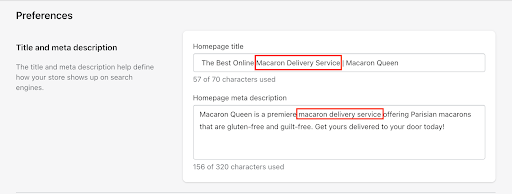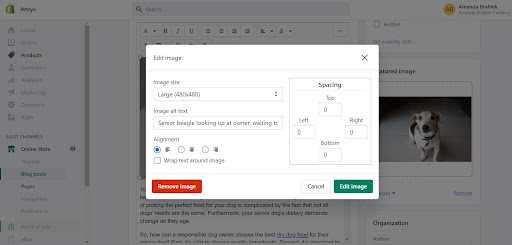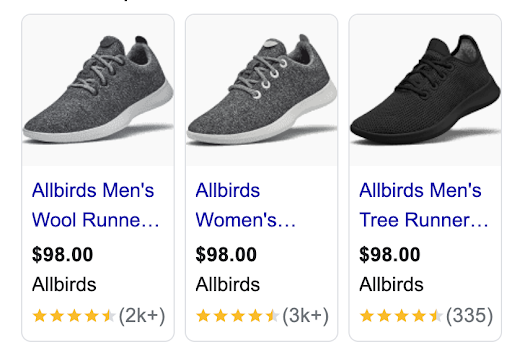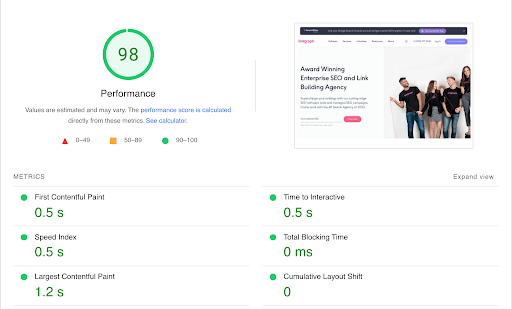
For e-commerce retailers, getting your product pages ranking well in Google can mean more potential customers browsing your online store. With paid media costs growing every year, organic SEO is becoming an increasingly affordable way to drive site traffic and sales for the long-term.
But unlike B2B or SaaS websites, e-commerce retailers face some unique SEO challenges, particularly when competing against big brands and major incumbents in their industry. So to make sure that your product pages rank for the many ways that potential customers search for products like yours, keep these product page SEO tips in mind.
What is Product Page SEO?
Product page SEO (and e-commerce SEO) is the process of optimizing product pages to rank more often in search results. Although similar to traditional SEO best practices, product page SEO is particularly focused on helping e-commerce businesses rank for transactional and commercial keyword searches.
Common SEO Challenges for Product Pages
E-commerce websites tend to face certain challenges when it comes to ranking well in search results.
- Thin Content: Google likes long-form, in-depth content. Because product pages are often light on content, it can be difficult to get Google to see them as high-quality
- Duplicate Content: Product pages that are auto-generated can look too similar to Google crawlers. Because Google wants to promote original content, product pages that are too similar can often hold e-commerce websites back from more organic clicks
- Inventory: Having product pages ranking for search queries can create challenges when those items are seasonal or go out of stock.
- Crawl Budget: Enterprise retailers with thousands of product pages can easily max out their crawl budget, which can lead to some product pages not even being indexed.
- Bad Site Architecture: With so many landing pages, e-commerce sites can easily suffer from poor architecture signals if their product pages are not organized into clear categories, or if their internal linking and navigation menus are not strategically utilized.
Product page SEO can help site owners anticipate these common setbacks and deploy strategies to avoid them. Overall, product page SEO can lead to more keyword rankings and organic clicks, lowering customer-aquisition costs in the long term.
13 Product Page SEO Tips
To make sure that your product pages rise to the top of the SERPs, the key is to blend the fundamental practices of SEO alongside the tailored optimizations that make sense for web pages designed to promote products.
Align Product Names with Keywords
The names of the products in your store should align with the keywords that you’re targeting in your SEO Strategy.
Although creativity should be embraced in other areas of your marketing, keep your product names simple and straightforward. The goal is to ensure that Google understands that your web page feature the exact products that users are searching for.

Simple, Descriptive URLs
URL structures help Google crawlers and users understand your site architecture. As you organize your products into categories and collections, url paths should be consistent across your website.
To improve clicks, the url slug should also reflect the user’s search query. Product page slugs should include your target keyword and be descriptive. Some examples of descriptive url paths for the same product include:
- https://www.rogansshoes.com/asics-gel-kayano-27-running-shoes-womens
- https://www.fleetfeet.com/products/womens-asics-gel-kayano-27?size=12
- https://runpacers.com/products/womens-asics-gel-kayano-27-in-white-pure-silver
The examples above get increasingly more specific, which is okay, because searchers are getting more long-tail when searching on Google. If you deploy this strategy though, make sure your slugs are still relatively short and simple so the user can easily see the direct relationship to their original keyword search.
Add Breadcrumbs
After you’ve done the work of organizing your products into categories or collections, make it easier for searchers to understand the hierarchy of your ecommerce store by adding breadcrumbs.
Breadcrumbs can help Google crawlers and users better understand your website architecture. They also can help improve click-through-rates, as they are visible to the user in the SERPs.

Optimized Page Titles
The product page title will also show up in your SERP result and should adequately describe your product and entice the user to click.
There is obviously some repetition here between the product name, url slug, and page title, and that is okay. You want Google crawlers and users to know exactly what product your page is featuring. These core elements of your metadata should all include your target keyword phrase or a close variation.

Add Promotions and Deals to Meta Descriptions
The meta description is your opportunity to really stand out from your competition, particularly if other retailers are selling similar products.
Meta descriptions best practices include limited your character count between 120-150 characters and including your target keyword. But if your ecommerce store offers any unique perks like discounts, free shipping, or returns, including these details can be all the difference in driving clicks to your product page instead of your competitors’.
Although Google sometimes rewrites meta descriptions, it is still important to take the time to optimize them. Most ecommerce CMSs like Shopify, WooCommerce, and others make it easy to edit key HTML tags that are essential to better SEO performance.

But remember, Google is now advanced enough to understand synonyms and related phrases, so no need to stuff the same keyword over and over again into this HTML elements of your product pages. Your meta descriptions should read naturally and offer a clear picture of the content to search engine crawlers and users.
Make your Product Descriptions Semantically-Rich
Because product pages tend toward thin content, product descriptions provide the opportunity to add more content to the page and signal strong relevance with the use of synonyms and LSI keywords.
Product descriptions should be unique and original. Although time consuming, this helps prevent any duplicate content penalties. A content optimization software can help site owners identify the related terms, topics, and phrases that Google crawlers look for on the page to understand relevance and topical depth.

Including these terms into your product descriptions can help improve your page’s overall ranking potential.
Optimize Image File Names and Alt Text
Your online store likely features high-resolution product pictures, but Google can’t see your images. It’s important that you optimize your images so Google understands what they are and how they are relevant to what users are searching for.

Make sure that both your image file names and your image alt text is descriptive. This will also improve the shopping experience of users who may have visual impairments, making your online store more accessible overall.
Add Structured Data
Schema.org markup is a kind of semantic vocabulary that helps search engines more easily extract the content on web pages to promote in SERP features like rich snippets. For product pages, product-rich results are key for ranking at the top of the SERPs alongside top competitors.

Adding schema doesn’t require advanced development knowledge. You can use a schema generator tool to generate the markup along with all of the required properties and add it to your HTML editor in your CMS. For certian ecommerce CMSs like Shopify, there are specialized SEO plugins that can make the process of schema must easier.
Some products schema all e-commerce retailers should utilize include:
- Brand
- Category
- Dimensions
- Color
- Model
- Material
- Special offers
In addition to the above, adding reviews/aggregate rating schema to your product pages can also have an amazing impact on CTRs, ultimately helping Google see that your products are loved by users.

It’s important to remember that Google uses CTR via RankBrain in its ranking algorithm to understand how relevant users are finding your SERP results. Adding schema markup can help your SERP result be more enticing to users, meaning more clicks and better SEO performance overall.
For Enterprise Ecommerce: Noindex, Nofollow When Needed
Enterprise e-commerce sites with thousands of product pages are at risk of maxing out their crawl budget. Google has a set crawl budget for every website, and if your product pages exceed that budget, not all of the pages on your website will end up in Google’s index.
If you don’t pay attention to crawl budget, that can result in Google crawling and indexing products that are low inventory, out-of-stock, or seasonal, meaning users bouncing back to the SERPs when they don’t find the products their looking for.
So for those e-commerce sites to which this applies, consider utilizing the noindex, nofollow robots tag. This directive tells search engines not to crawl and index the page.

Most likely, not every single web page in your online store needs to rank. Plus, some are unlikely to rank well at all due to thin or duplicate content. Crawl budget optimization is all about ensuring that your highest quality, highest converting pages are indexed and promoted to searchers.
Make Sure your Pages are Fast-Loading
With Google’s Page Experience Update, the content on your product pages is not only important to ranking, but how quickly they load and perform for users across devices.
If you’re using a popular ecommerce CMS like Shopify, make sure that your theme is designed to be fast loading and SEO optimized. If you’re not sure about your current website’s technical performance, you can audit your site using the below free tools.
- PageSpeed Insights: Look to the Issues Detected to identify what’s slowing you down
- Google Search Console: Look to the “Experience” feature and your Core Web Vitals Reports to diagnosis CWV issues

Use Internal Links Wisely
Internal links are important because not only do they keep searchers navigating through your website, they help Google crawlers understand your site architecture and spread PageRank across your web pages.
One of the best ways to add internal links on product pages is through “related products,” or “you might also like,” features. If you do have out-of-stock items that end up ranking well in Google, you can use features like this to direct users to other relevant products on your site and preventing them from bouncing back to the SERPs.
Build Links to Product Pages
Although high-quality content is important, backlinks are still essential to ranking well in Google search.
Taking the time to proactively seeking out link building opportunities through digital PR and outreach can have long-term beneftis to improve the rankings of all of your web pages.
Getting your products featured in seasonal roundups or gift guides will not only only bring you referral traffic, it can help you build your site authority if those links come from authoritative, trustwrothy websites.
Final Thoughts on SEO for Product Pages
Many of the above optimizations can be easily completed by site owners in their CMS platform. But, for larger e-commerce websites with hundreds to thousands of products, it can be a time consuming and resource-intensive process.
If you don’t feel comfortable taking a DIY approach, or don’t have the team in house, consider outsourcing your product page SEO to a digital marketing agency or professional. Although a larger financial investment, the benefits can be significant: more keyword rankings, more clicks, non-stop SEO traffic, and lower customer acquisition costs in the long-term.
